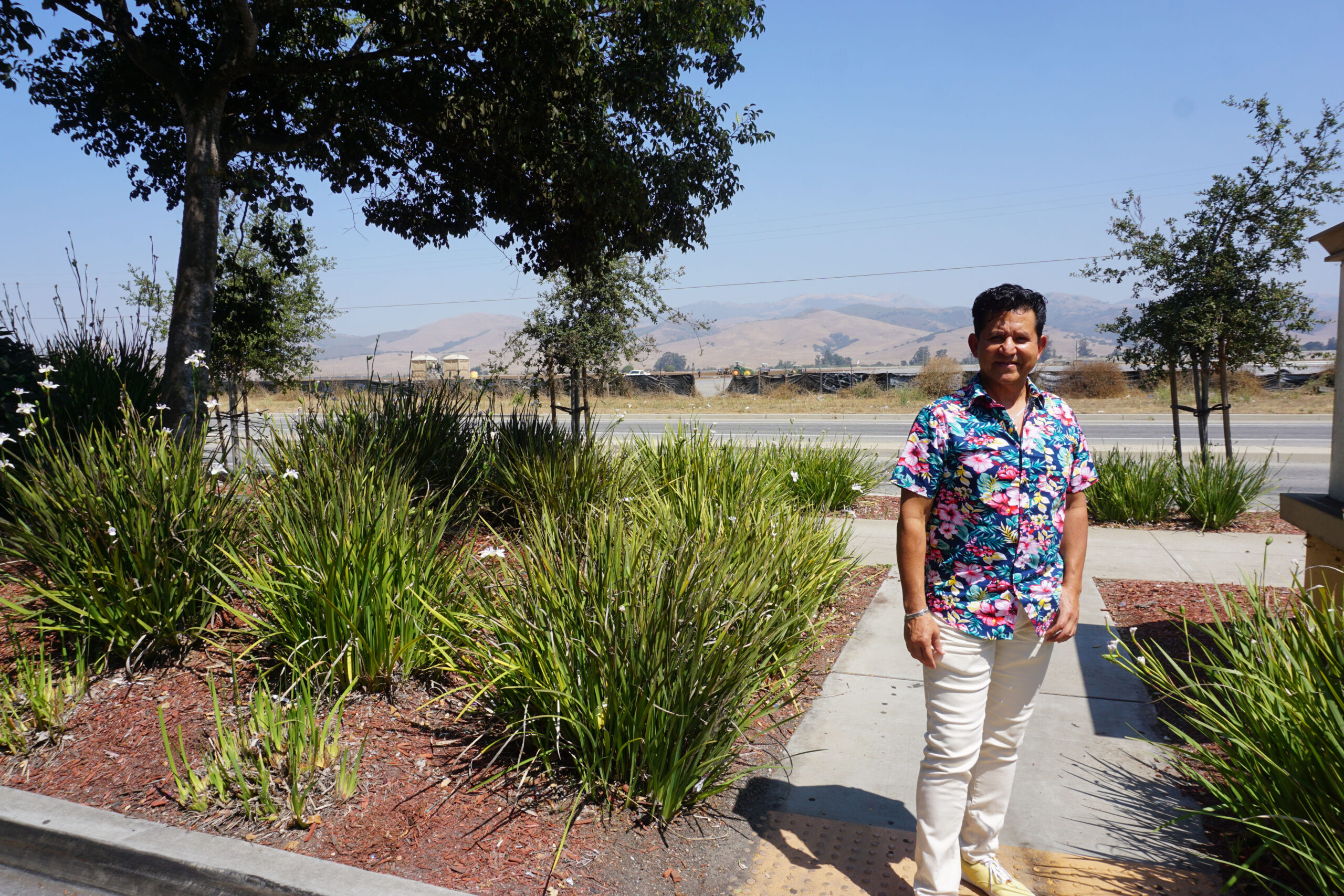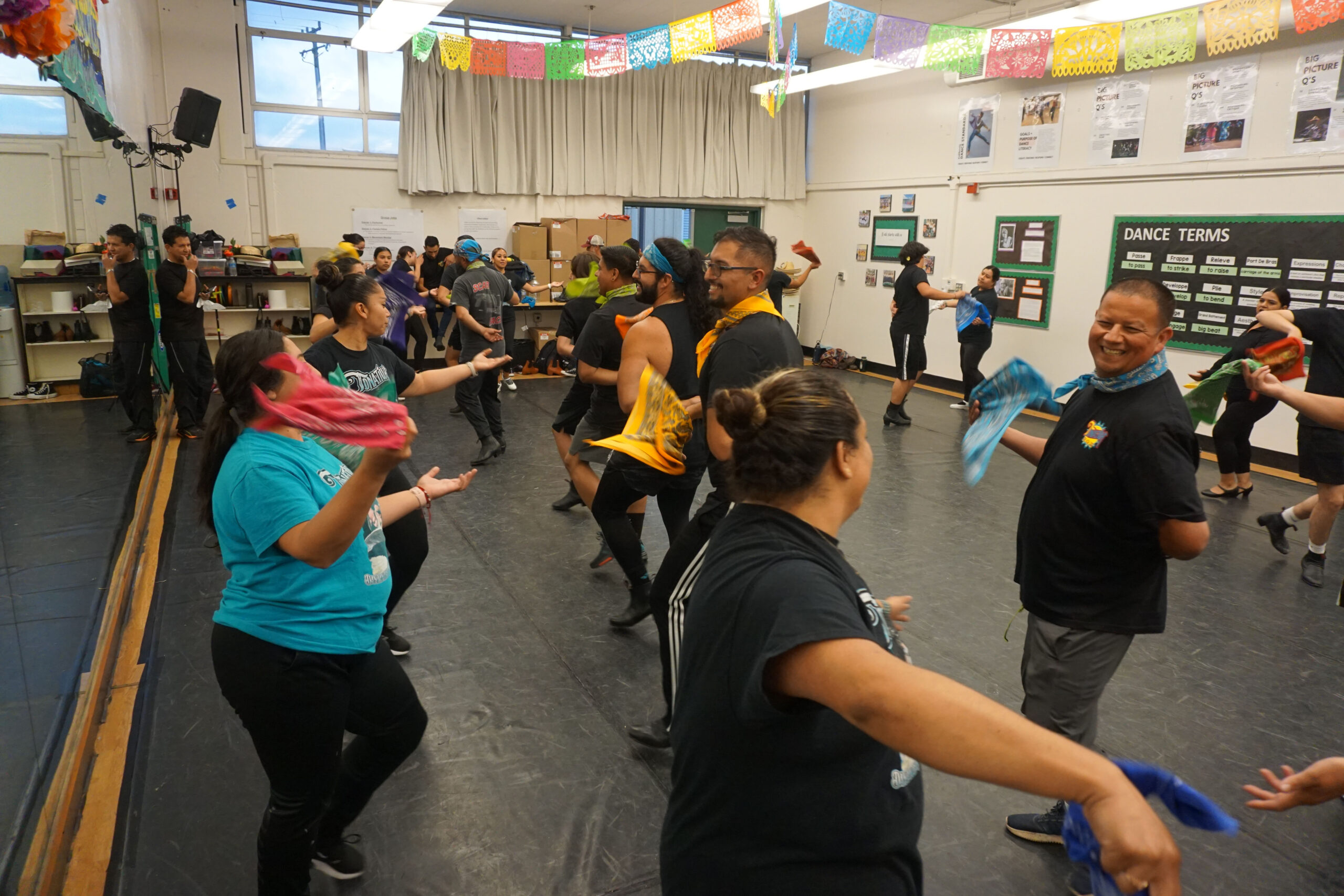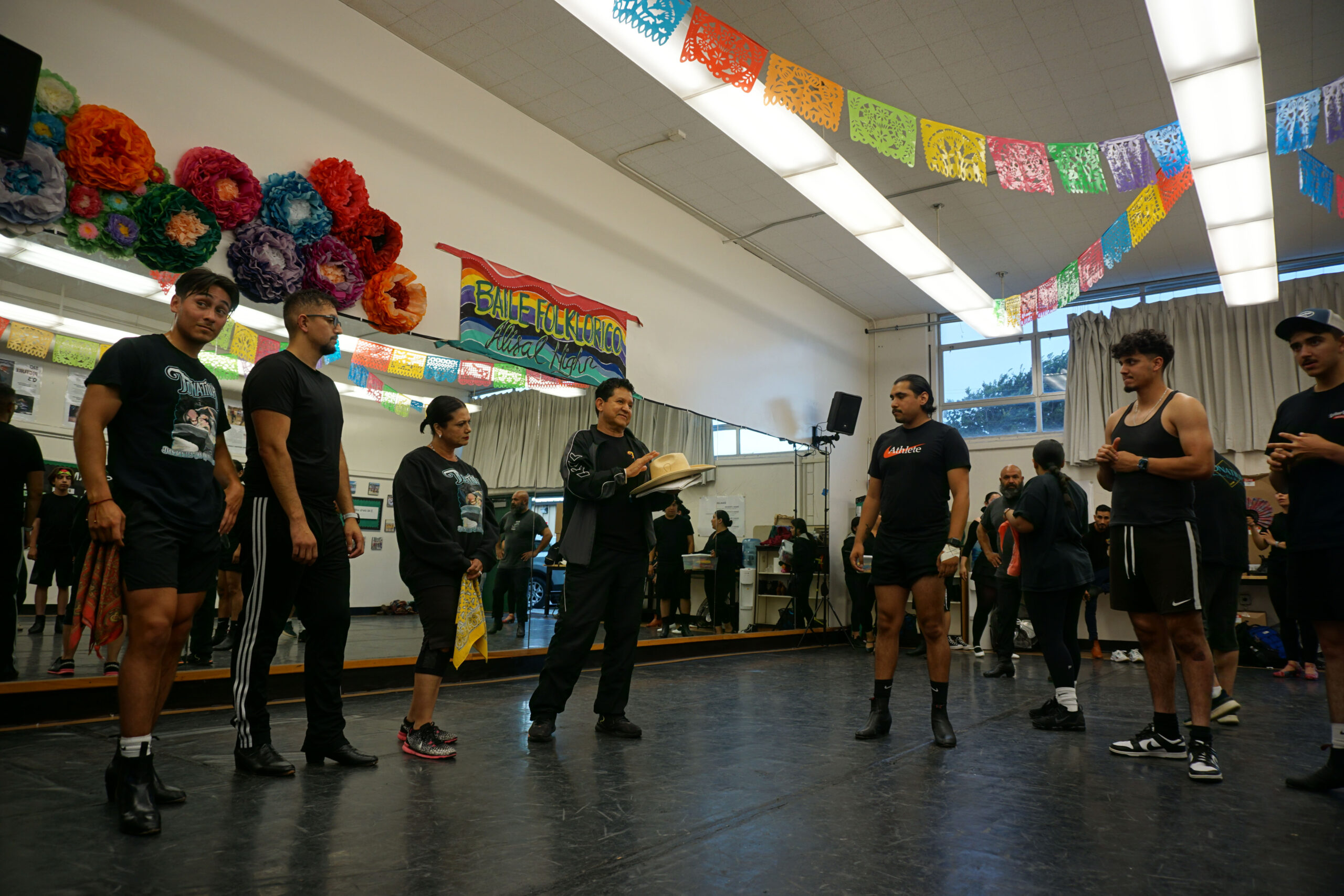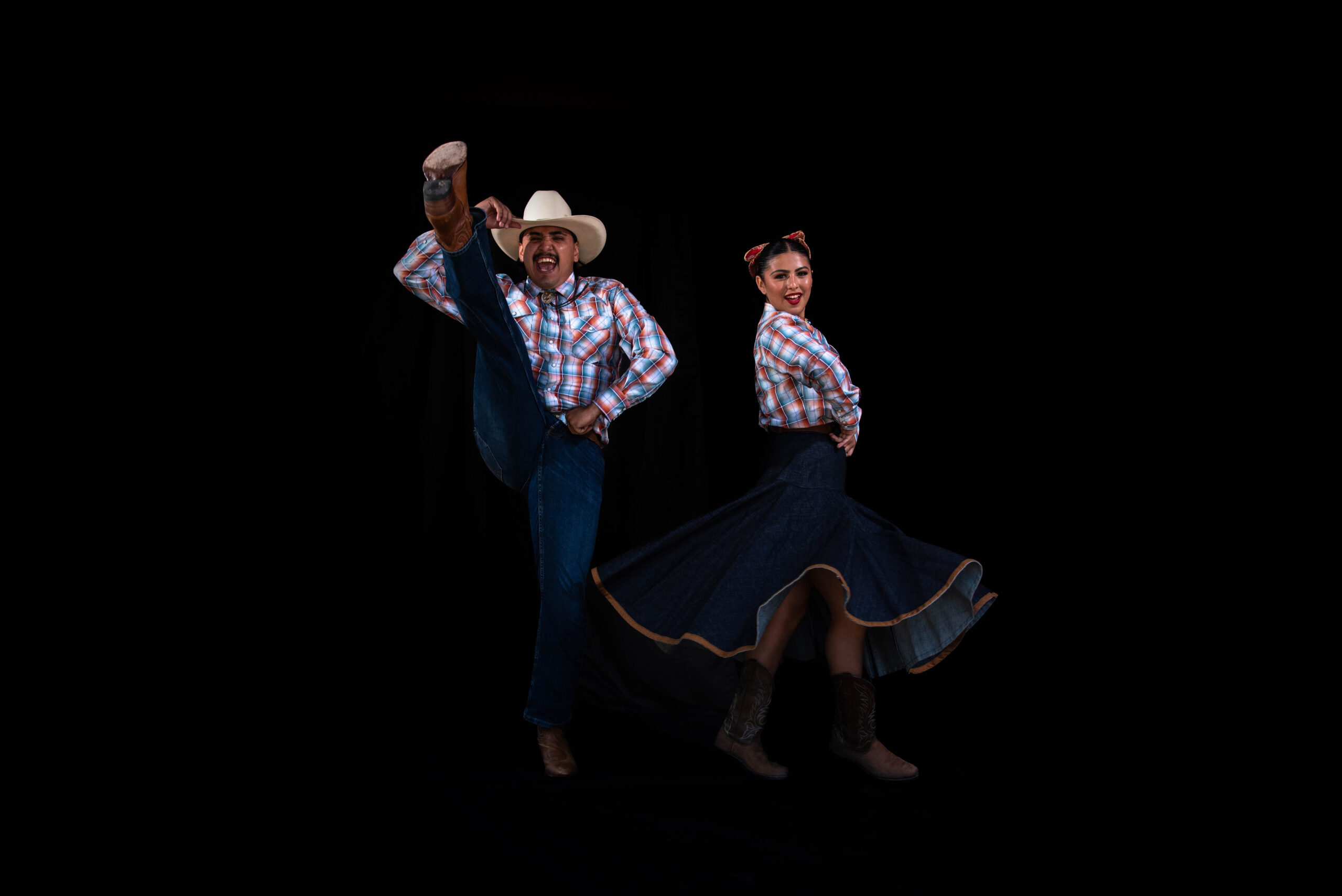| FEATURES
Article and photos by Claudia Meléndez Salinas
In the Silva Ruelas clan, legend has it that Ramón, the third of seven children and the eldest of the boys, escaped from the adults one day during a visit to his grandmother’s house. At that time, Ramón was 3 years old, and the family lived in Ayotitlán, Jalisco, Mexico.
Being in a small community, a neighbor soon came to the house to tell them that she had seen Ramón dancing in the temple with a traditional rattle in his hand. The conchinche belonged to his uncle, a dancer that the boy was imitating. For Ramón Silva Ruelas, that was the beginning of his trajectory as a dancer, the awakening of the voice that whispered to him that dancing was his thing, that tapping and spinning were his destiny.
Tonatiuh Danzantes del Quinto Sol, the dance group that Silva Ruelas would eventually found in Salinas, is celebrating its 30th anniversary. In lieu of cake and candles, the group will celebrate with a recital on Saturday, Sept. 9 at Sherwood Hall.
Voices of the Monterey Bay co-founder Claudia Meléndez Salinas interviewed Silva Ruelas about his journey. The interview has been edited for space and clarity.
Enlarge

VMB: How did you start dancing?
RSR: I brought dancing and music with me when I was born. There are stories that, before I could remember, when I was 3 years old, my uncle used to dance and suddenly they couldn’t find me at my grandmother’s house when I went to visit. I grabbed a cochinche, a rattle, and I went to dance in the temple. They went looking for me everywhere and a lady came to tell my mom that I was dancing in front of the temple. That was the beginning of my voice saying, “This is what I want, this is what I bring inside of me.”
As the years passed, in schools, I raised my hand when it had to do with something with the arts, with dance. Unfortunately I never participated because my parents didn’t have the money to pay for what was necessary: the hat, the boots, the suit. It wasn’t until I got to Salinas that I could, after high school, when I started working, that I could afford a pair of boots, a guayabera, a hat, when I really started to dance and perform with a group.
VMB: Did you study Mexican folklórico dance or are you self-taught?
RSR: In the late ‘80s there was a group called Los Quetzales, which were mostly teachers from the Alisal Union School District, under the direction of Aurelio González. That was where I formally began to learn what Mexican folkloric dance is and present it to the community. So in this fertile land is where I really started (to dance).
Enlarge

VMB: When did you start teaching?
RSR: At first, when I graduated from the University (of California) Santa Cruz, I didn’t see that I was going to get support for dancing, or that there was going to be a position for me to be able to do that as a job. So I became a primary school teacher. I started as a teacher at the Sanborn School, today Jesse Sánchez. I started giving dance classes in the afternoons, I made a group of children in fourth, fifth and sixth grade. And at that moment I realized that what I liked the most was doing what I did in the afternoons for free, volunteering. I was looking for a way to make the costumes with my own funds and the children had presentations in the community. The children chose to name the group “Los folklóricos de Silva,” and that’s how it worked. After three years I realized that my passion was more about dance, so I looked for a dance program and that’s when I went to (the University of California) Irvine. But I promised the kids that I would come back when they were in high school.
VMB: And of course, you came back…
RSR: I was just going to study (dance). I was there for three years. When I returned, these children were already adolescents and I began to realize that many of them were in trouble. Gangs, drug addiction. I immediately looked for them, we met and formed a youth group. That’s where Tonatiuh came from. Most returned, thank God, and took another path again. This is how we formed Dancers of the Fifth Sun.
VMB: Why did you give it that name?
RSR: The name came up in ’93, shortly after I started the group. We met, and from a brainstorming session the name of Tonatiuh emerged, which is the central part of the Aztec Sun Stone and means movement. Those who were there at that time thought that the dancer dances with his heart and soul. The Fifth Sun, according to Aztec mythology, we are living during the fifth world.
Enlarge

VMB: Until a few years ago, it was very common to see young people from the community leave to study and never return. But you came back, as many others are doing. What brought you back?
RSR: The community: I have seen the need in our community for art, dance, music to lead us to something good. And at the same time, when we have it and learn it, we give it to the community in gratitude for what the community has done for us. When we arrived in ’77, directly from Sonora, this community received me as I was. Over time I have looked at these needs. Maybe nobody gave me what I needed to develop what I had inside me, but I want to give it to children and young people. That is why we try to ensure that families do not pay a penny. If the money doesn’t come from the districts, we get it from the group, even from my own pocket.
VMB: Thirty years of experience are easy to say, but it implies a lot of work and sacrifice. What do you think of this milestone?
RSR: I am very pleased that dance is already so deeply rooted. When I started it hardly existed, there was a small group of teachers, maybe 10 and a maximum of 12. Knowing that there is so much folklórico in schools, in high school, in elementary schools, gives me great satisfaction. That I was a part of it, and that my students keep going. At North High they have a complete folklórico dance program, and it exists because I wrote the curriculum, I turned it in to the school district and now any school in the Salinas Union High district can offer folklórico classes. And the children’s programs, from the start we had children’s programs, but only in two or three schools a year. Nowadays there are 14 schools, and there are two groups in each school. For me it is a lot, I am not able to cover as much as I would like. It’s a lot of work. I would like to split myself in two.
What: Tonatiuh Danzantes del Quinto Sol presents “Traditions in Motion: Three decades celebrating our roots”
When: Saturday, Sept. 9, 7 p.m.
Where: Sherwood Hall, 940 N. Main St., Salinas
Price: $20 adults (over age 13), $10 children (ages 5-12)
Enlarge

Have something to say about this story? Send us a letter.
